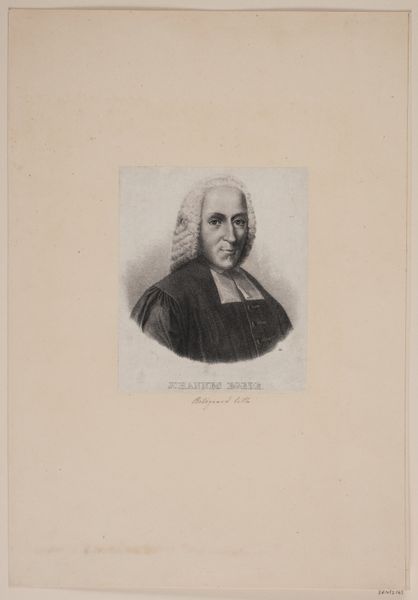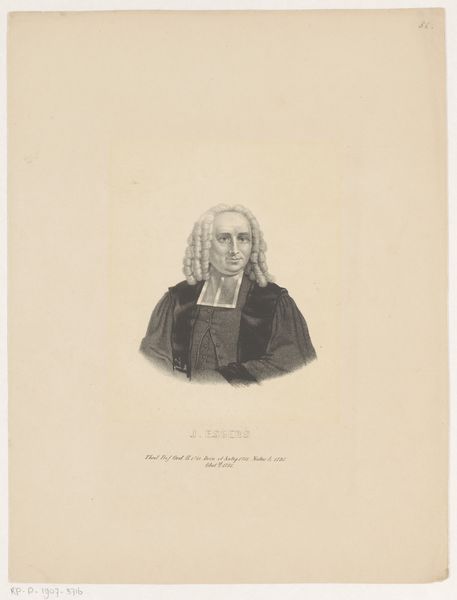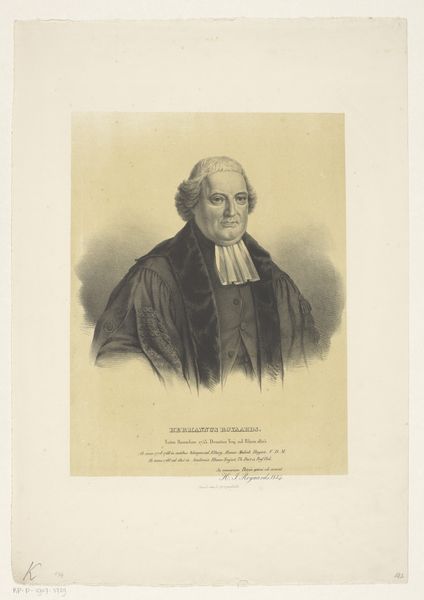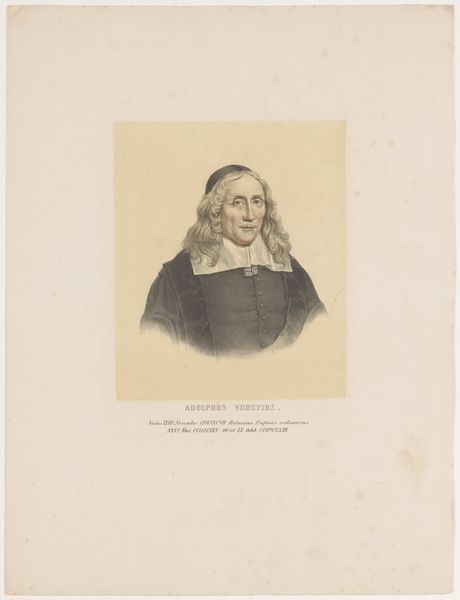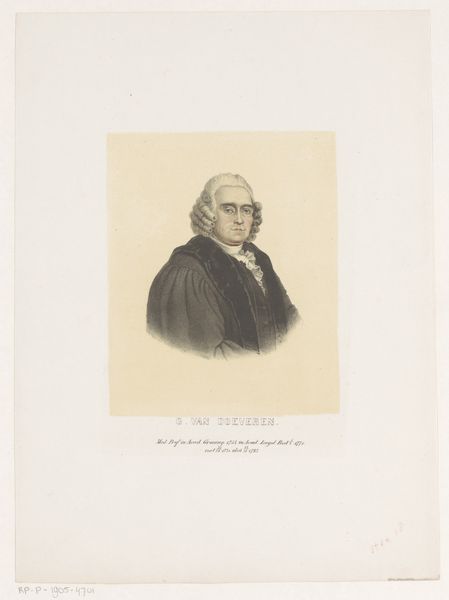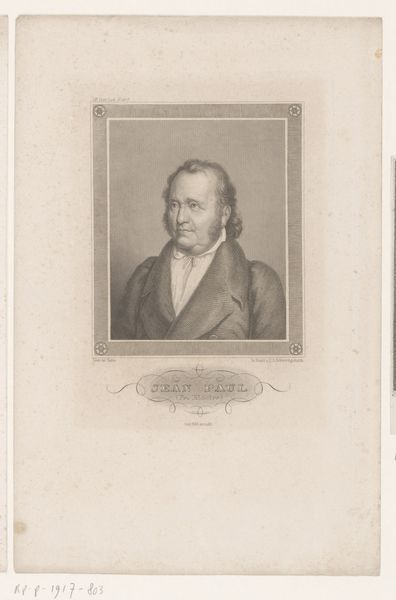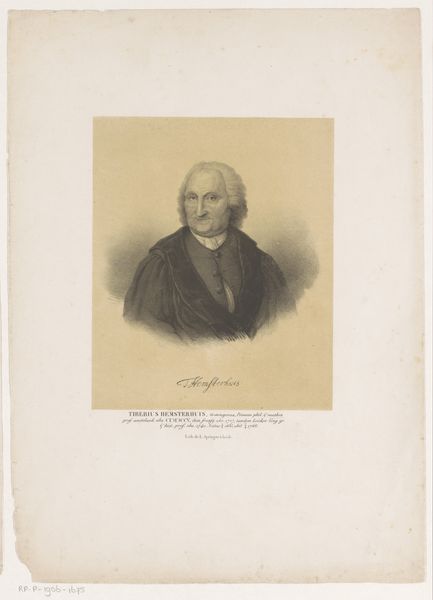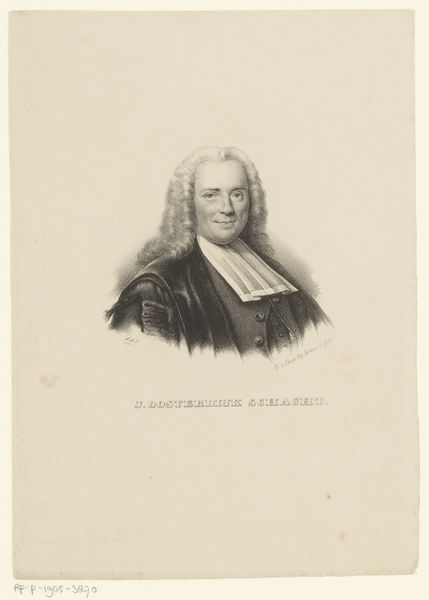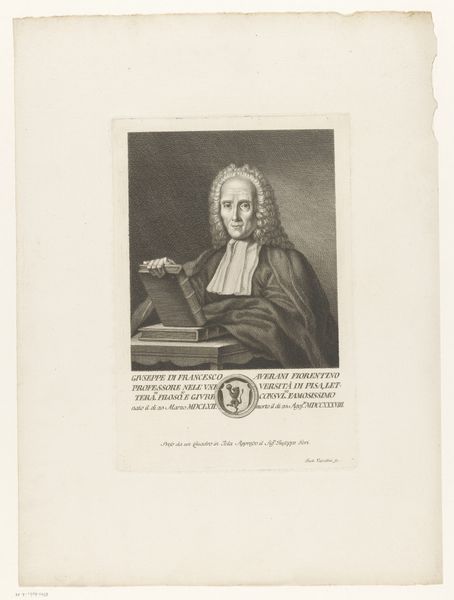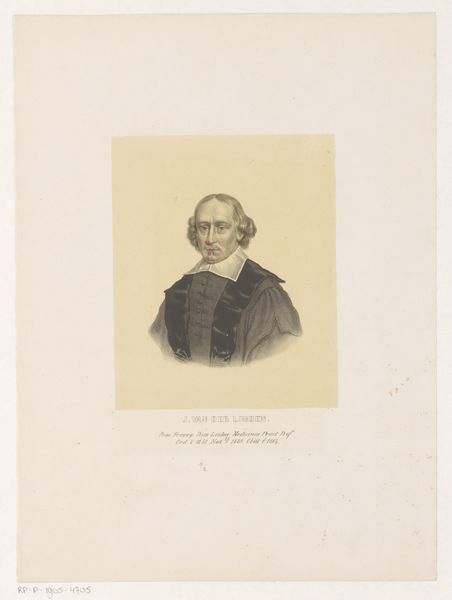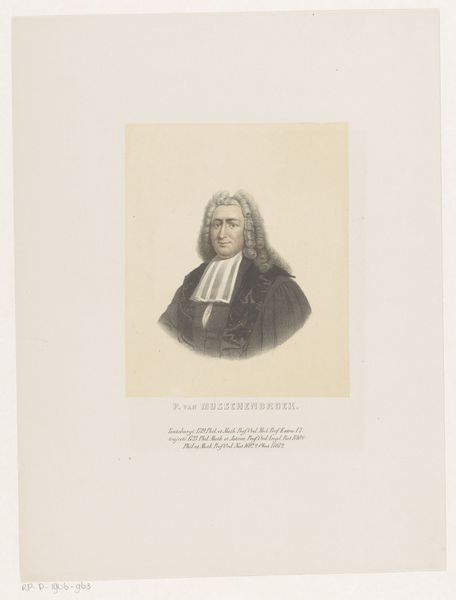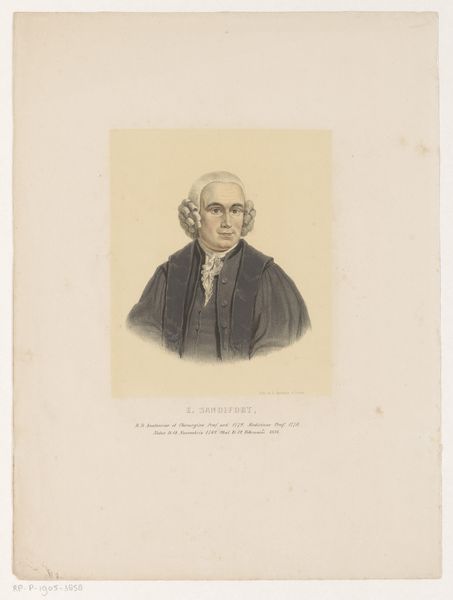
drawing, print
#
portrait
#
drawing
#
neoclacissism
# print
Dimensions: height 463 mm, width 308 mm
Copyright: Rijks Museum: Open Domain
Editor: This is a print made between 1816 and 1833, a portrait of Giovanni Alfonso Borelli by Pierre Roch Vigneron. It feels very formal and restrained. How do you interpret this work, considering the social and historical context? Curator: That's a great starting point. Considering it was produced during the Neoclassical period, the formality makes sense. Neoclassicism was deeply intertwined with the Enlightenment's emphasis on reason and order. But who was Borelli, and how might his identity and the image itself engage with the power dynamics of that era? Editor: I know he was an Italian physiologist and physicist... Maybe the portrait tries to portray him as an enlightened, rational thinker? Curator: Precisely. Think about the rise of scientific rationalism and how portraits of scientists could serve to legitimize this emerging intellectual authority. The seemingly objective representation masks the underlying ideologies at play. How do you see his pose and expression contributing to this? Editor: He has a serious face, staring straight ahead, exuding confidence. It feels like an attempt to visually embody Enlightenment ideals of knowledge and authority, solidifying the status of scientists. Curator: Absolutely. And consider the printmaking process itself – the dissemination of such images contributed to the construction of celebrity and authority. Can we link the idea of image dissemination to the concepts of race, gender and power? How can this formal image of Borelli enter into those conversations? Editor: It's interesting to think about how even something that appears simple as a portrait becomes wrapped up in ideas about who holds power and how society values certain kinds of knowledge. This image becomes so much more complex once you start digging into the history. Curator: Indeed, the aesthetic choices normalize and reinforce specific societal values of knowledge, status, and authority.
Comments
No comments
Be the first to comment and join the conversation on the ultimate creative platform.
